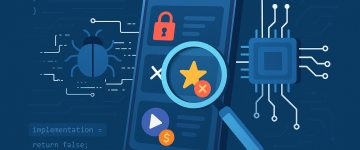Prism Infosec’s Senior Security Consultant, Aaron, reviews the “Top 3 Common Networking Attacks”
During this unprecedented period when much of the world’s population is affected by lockdown measures and limited activities, cyber criminals have intensified their attacks. The state of fear and uncertainty has provided them with a new “business opportunity” and whilst most of us are spending more time on the Internet than ever before, several types of cyber-attacks have seen a drastic increase over the last few months.
1. Phishing Attacks
Amid this chaotic situation, many people are seeking out COVID-19 related information online, hoping to find reliable guidelines to stay safe and well. At the same time, hackers are taking advantage of this by ramping up “phishing” attacks that trick internet users into opening malicious files or links that report to provide COVID-19 information.
Cyber criminals do this by impersonating trusted organisations and sending out convincing emails containing attachments that are laden with malicious payloads. On opening, the attachments execute the code and allow an attacker unauthorised access to system resources and data, along with the capability to execute further attacks on other networked devices or resources.
In other phishing attacks, unsuspecting users are tricked into following links that lead the user to realistic login pages for trusted brands. On logging in, the valid usernames and passwords are captured and later used by criminals to conduct financial fraud and impersonation.
Phishing attacks can be mitigated in several ways:
- Implement anti-spoofing policy with malware and spam filters on mail servers to keep malicious emails from employees.
- Implement email security protection measures such as SPF, DKIM and DMARC. This increases assurance around the validity of the sender associated with a particular domain and verifies whether it has been impersonated and prevents the emails from reaching inboxes.
- Training employees on how to identify phishing exploits and the actions to take when they suspect phishing or have already opened an attachment or followed a link.
2. Denial of Service (DoS) and Distributed Denial of Service (DDoS) Attack
At a time when Internet connections are required more than ever, a successful Denial of Service attack will have a more damaging impact than ever before.
A Distributed Denial-of-Service (DDoS) attack is when a collection of computers are infected with malicious code and controlled as a group (botnet). They are then targeted on another Internet service such as a web site, which is flooded with Internet traffic to deny its service to legitimate users. The outcome of a DDoS attack is operational disruption, which is achieved when systems and services are taken offline. Furthermore, attackers can disrupt organisations by threatening to shut down business services unless large sums of money are paid.
- Utilising a Web Application Firewall (WAF)
- Implementing rate limiting
It is crucial that organisations understand Denial of Service attacks and always be prepared to defend against it.
3. Remote Desktop Server Attack
Recently, many organisations have turned to Microsoft’s Remote Desktop Protocol (RDP) as a method of allowing remote workers access to corporate resources. The sharp increase in corporate services that need to be remotely accessible has significantly increased and with it the requirement to support remote working, however so has the number of reported RDP attacks.
RDP is a simple and cost-efficient method of facilitating remote working and access to corporate resources such as applications or desktops. However, the protocol is not sufficiently secure to be exposed to the internet. Without adequate security configurations in place, it can be easily compromised allowing an external attacker to gain a foothold into internal networks.
RDP attacks typically involve brute-forcing usernames and passwords, attempting all possible combinations until the correct one is found. Upon discovery of a correct combination, an attacker can gain full desktop access to a computer in the target network.
If your organisation must enable RDP, it is crucial that the following protection measures are in place:
- Unique, long and random passwords are in use to protect the systems
- Two factor authentication
- Limiting the use of RDP to devices using a Corporate VPN
- Ensure security options such as Network Level Authentication are enabled
- Avoid connectivity of the RDP service to a corporate domain
If RDP access is not required, then it should be disabled and access to port 3389 should be blocked at the firewall.
Conclusion
In conclusion, cyber-crime is bound to increase for the rest of 2020 as cyber criminals are constantly engineering new methods to attack business operations. Hence, it is crucial that businesses stay ahead of cyber threats by maintaining good security practices, such as:
- Regularly review network security – Audit security controls in place to ensure that network perimeters are well protected and unnecessary access are removed. Continue to monitor all systems and networks for unusual activities.
- Maintain user education and awareness – Constantly remind employees of the importance of both physical and cyber security awareness. Develop home working policies and train employees to adhere to it.
- Ensure Malware prevention is in place – Ensure that all anti-virus solutions are updated daily and anti-malware policies are in place.
- Maintain secure configuration on all systems – Make sure that all servers and end user devices are patched up to date. Ensure that all remote working devices are subject to integrity checks before they are allowed access into corporate networks.
- Secure remote access configurations – All remote solutions should utilise secure authentication, encryption technologies and have multifactor authentication enforced where possible.
- Monitor user activities and privileges – Continue to monitor user activities for potential malicious activities and ensure that principle of least privilege is actively applied.
- Incident response plan – Always be alert and prepared for potential cyber-attacks, ensure that an incident response plan is in place to deal with any emergencies.














